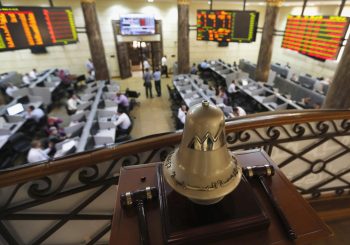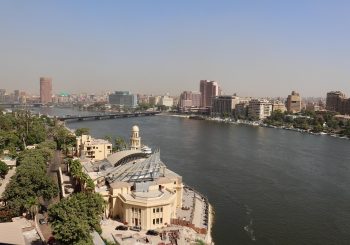Khedive Ismail, Egypt’s late 19th Century ruler, initially conceived of the idea of establishing a zoo in conjunction with the inauguration of the Suez Canal in 1869. However, due to time constraints, this plan was not realized. It was not until 1 March, 1891, that the Giza Zoo was officially opened to the public.
Spanning approximately 80 acres, the Giza Zoo — the third oldest in the world and the oldest in Africa — was originally intended as a botanical garden featuring a diverse collection of rare plants and cacti from around the world, with the introduction of animals coming later.
In addition to the zoo’s animal inhabitants, several cultural attractions can be found within. The Japanese Kiosk was established in 1924 during King Fuad’s reign in honor of a Japanese prince’s visit to Egypt. The pavilion now operates as a museum within the zoo, housing artifacts and photos that highlight its history. Not far from it, visitors can find the centuries-old gates that used to serve as the entrance to Khedive’s Palace and the Haramlik Palace.
Additionally, the Zoological Museum, constructed in 1906, features three large halls displaying various animals, including birds, reptiles, fish, and preserved specimens. Two additional halls exhibit reptile and bird skins alongside a taxidermy lab. Notable exhibits include an ancient Egyptian crocodile and a whale that washed ashore near Alexandria.
The Suspension Bridge, a creation of the renowned French engineer Gustave Eiffel, connects Khedive’s Palace to the Haramlik Palace. This wooden platform bridge, suspended by steel cables, is considered the world’s first elevated viewing platform in a zoo. Eiffel completed the project between 1875 and 1879, predating the construction of the Eiffel Tower by over a decade.

A Fall From Grace
In its heyday, the zoo was renowned as one of the world’s finest. However, in the last two decades, it has progressively deteriorated due to neglect and inadequate management, with minimal funding allocated to its upkeep. The situation was exacerbated when it was removed from the World Association of Zoos and Aquariums (WAZA) in 2004 due to subpar conditions.

Over the past decade, several petitions have circulated condemning the animal abuse in Giza Zoo. Some even called for its permanent closure.
Occupy For Animals, an animal welfare group, called for the closure of seven government-run zoological facilities in a In a 2012 campaign. The website featured a series of photographs depicting animals that have been subjected to mistreatment or injury within zoos across the nation.
These distressing images included severely wounded wolves at the Fayoum Zoo, a baboon confined in a small and unsanitary enclosure in the Tanta Zoo, a deer afflicted by a severe skin ailment at the Giza Zoo, and a malnourished lion as well as a camel suffering from a tumor at the Alexandria Zoo. Upon their release, these alarming photographs elicited strong reactions from internet users in Egypt and beyond.
Three years later, the hashtag #SaveGizaZoo circulated on social media platforms to raise awareness about the deplorable situation there. Indignant Egyptians asked the government to take immediate action after several incidents of neglect led to animal abuse and sometimes death.
Despite its animal rights challenges, the zoo’s low ticket price kept it a popular attraction for couples and families, who often visit it as if it were a park. Abundant grassy areas and exotic trees provide ample shade and seating.
New Beginnings
Rumors circulated in late 2022 that the government had sold both the Giza Zoo and the Orman Botanical Garden, which was also built by Khedive Ismail. The Ministry of Agriculture and Land Reclamation quickly discredited the news, reaffirming that both gardens will continue to be under the ministry’s jurisdiction.
In a December interview with television news anchor Lamees Al Hadidi, Maged Al Serty – the CEO of the National Military Production Company for Projects, Engineering Consultations, and General Supplies, which operates under the Ministry of Military Production – revealed a major renovation plan. This plan outlines a comprehensive restoration project for the Giza Zoo, with the goal of bringing the zoo back to its former glory following years of neglect.
The renovation project, now underway, is expected to last a maximum of 18 months, during which the facility will be transformed into an open-range space, eliminating the need for traditional animal cages.
Al Serty emphasized that the renovated zoo will prioritize visitor safety with designated paths and enhanced security measures.
Accordingly, the zoo temporarily closed doors in January 2023. Al Serty reassured the public that no trees would be removed during the renovation, and existing merchants and attractions within the zoo would be preserved and strategically relocated to avoid disruption to the zoo’s overall structure.

In his interview with Al Hadidi, Al Serty revealed that the nearby Orman Botanical Garden was also scheduled for simultaneous renovation and development, including the construction of a gondola lift connecting the two attractions.
The renovation project is being executed under an established usufruct agreement between the National Military Production Company and the Egyptian Ministry of Agriculture and Land Reclamation.
The National Military Production Authority will allocate no less than EGP 1 billion for the development without imposing any financial burdens on the Ministry of Agriculture. In return, the Ministry will receive an annual usage fee for both gardens that exceeds the current revenue generated by the gardens, with an annual predetermined increase.
The ownership of both gardens will remain entirely with the Ministry of Agriculture and Land Reclamation, and the management will revert to the ministry after the expiration of the 25-year usufruct agreement.
On 8 September, Prime Minister Mostafa Madbouly reviewed the final design for the development of the Giza Zoo, which will be officially renamed to its more popular moniker Geneinat Al Hayawanat, or Animals’ Garden in English.
The final design will see the zoo divided into several zones: Asia, Africa, America, the Family Zone, Safari Trips, Bird Tent, Egypt Zone, and Elephant Zone. Additionally, a night experience area has been added to extend the operating hours for families in Egypt.
Prime Minister Madbouly directed that these plans and designs be presented to the Supreme Council for Urban Planning and Development for approval, followed by a presentation to the Cabinet before commencing implementation.
Nader Saad, the cabinet spokesperson, revealed that the meeting discussed the detailed design specifications of the development project. This project aims to increase the number of animal species from 71 to 186, add attractive areas for visitors, and establish educational centers to teach children of all ages. It also includes preserving the garden’s trees, improving their health, increasing pathways and water bodies, enhancing animal enclosures, and establishing interactive animal exhibitions. Currently, there is no available information on ticket pricing.
The project will also preserve historical landmarks within the garden, including the Royal Hall, the Candle Hall, the Creativity Hall, the Japanese Kiosk, the Suspension Bridge, the Old Gate, and the remnants of the Haramlik Palace. It will also ensure the preservation of the zoo’s historical external walls and gates.
From its visionary inception to its gradual decline, this long chapter in Giza Zoo’s turbulent history is seemingly coming to an end. With a focus on revitalization, improved conditions, and a commitment to both conservation and culture, the now-titled Geneinat Al Hayawanat is set to right the wrong and honor its storied legacy.
Subscribe to the Egyptian Streets’ weekly newsletter! Catch up on the latest news, arts & culture headlines, exclusive features and more stories that matter, delivered straight to your inbox by clicking here.






Comments (0)